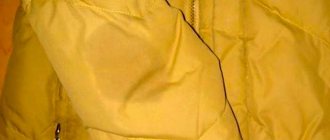Repair methods
There are methods that require additional investments, and there are those that allow you to make do with improvised materials, but each of them is only permissible in a particular situation, because everything depends on the nature and size of the damage.
What can you do?
Among the most popular means for repairing artificial reservoirs, there are several that have already been time-tested:
Special adhesive tape for swimming pools.
It is inexpensive - up to 500 rubles. The quality of the repair can be assessed as mediocre, but the tape will keep leaking for quite a long time.- Repair kits.
They are produced by global manufacturers of inflatable pools, such as Intex and Bestway. The kit includes a patch made of special PVC material (the same from which the pool itself is made), waterproof glue and, sometimes, also degreasing liquid. - Repair kits for inflatable boats.
- Glue and patch from scrap materials. The method is unpredictable, since it all depends on the quality of the glue, the patch material and the repair technique. But with the right approach, you can successfully deal with a leak in this way.
- Kits for vulcanization of car tires. The essence remains the same - special glue and patch.
Why not?
The following methods for repairing an inflatable pool can be distinguished, which will never lead to a good result and will not eliminate the leak:
- Regular stationery tape. The method is obviously ineffective, but many people start with it. The same applies to similar attempts using insulating tape, medical tape, etc.
- Superglue: you still won’t be able to seal the damage, but superglue can ruin the pool. This is especially true for children's models, which are made of thin material.
- A plastic bag instead of a patch. It will not be possible to seal the leak with a bag, since the bags have too smooth a surface, and it is almost impossible to glue them tightly to the surface of the pool, no matter how good and high-quality the glue is.
Puncture prevention
Knowing preventative measures, you can avoid damage to products. These include:
- Constant inspection of the product.
- Avoid the presence or use of sharp objects near the product, especially during installation.
- Cover with a cover every time after bathing.
- Try to install under canopies or in the shade, as direct ultraviolet radiation creates an increase in pressure in the air chambers. This may cause the base to break.
- Avoid installation near bushes, as this will puncture the base.
- The installation surface is cleaned, excess debris and stones are removed. Ideally, it will be a concrete floor or a tiled area with an installed underlay.
- Do not allow pets to bathe in the container, otherwise the base will be bitten or punctured.
Difference in sealing agents
The method of repairing a reservoir is selected based on two parameters: the type of pool (for children or adults) and the type of damage (on the wall or at the joint). Many owners of inflatable ponds also try to carry out repair work without draining the water. In some cases this is possible, but the gluing technique will differ significantly.
Along a seam or just a hole in the wall
Repairing damage to the wall is quite simple , especially if the pool is without water.
To repair pinpoint cuts and punctures, you can use any method: either adhesive tape or patches. But if the seam is leaking, then you cannot do without draining the water and additional drying of the pool.
To repair a seam, it is preferable to use special repair kits, or to carefully choose the glue and patch material. Moreover, seam repair is a longer and more labor-intensive undertaking.
It is impossible to properly seal damage at the joints with adhesive tape , only a reliable patch and a special waterproof glue, as well as preliminary degreasing of the gluing area and preliminary cleaning of the materials.
With or without water
It is correct to carry out repair work, of course, when the pool is empty, dry and clean. But it is not advisable to drain 3-4 cubic meters of water because of one small puncture. Therefore, manufacturers have come up with special means that can eliminate leaks without even draining the water.
Two methods are suitable for this: using adhesive tapes, of two different types and only in pairs with each other: one tape is glued from the outside, the other from the inside, as well as classic patch repairs.
Having drained the water and dried the reservoir, the owner of the pool has complete freedom of action, since he can use any method at his discretion. The only negative is that a filled pool allows you to quickly find the location of the leak, especially if the damage is minor.
Children and adults
Children's models, as a rule, are made of thinner material , so the use of many types of glue is contraindicated.
But adhesive tape is not the best option, since children's pools also have decorative qualities, because the child should be comfortable in it.
Therefore, there is also the task of performing repair work as aesthetically as possible. To do this, many manufacturers either produce special colorful stylized patches with special glue, or it all comes complete with the pool itself.
With an adult pool it is easier: it is larger, denser, the material is rougher and is not susceptible to corrosion by glue, and aesthetic aspects often fade into the background. Therefore, those wishing to repair a model for adults can choose a repair method based on other factors.
What is the best way to seal a hole?
When the leak is located, you can begin to work. Here's what might come in handy:
- Ready-made repair kits - usually included with the pool. If this is not available, you can purchase it in the fishing departments. The repair kit includes underwater patches and special glue.
- Plumbing sealant is a product for repairing small cracks and punctures. It fills small holes efficiently, does not turn yellow, does not crumble and is not afraid of exposure to water and sun.
- Moment rubber adhesive is a cheap and effective repair tool that produces a waterproof seam.
- “Liquid patch” solution - PVC in liquid form. The solution dries in 10 minutes. An excellent product for sealing punctures up to 3 cm in diameter.
- Superglue “Vinyl-cement” – cold welding with high adhesion reliability.
- Roofing bitumen aluminum tape is a durable foil with an adhesive coating. This tape is resistant to moisture and can protect the pool from leaks for some time. This product is suitable for emergency repairs, but if you heat the adhesive tape patch with an industrial hair dryer, the reliability of the seal will increase.
You can seal the puncture while the pool is full or after it is empty. It all depends on the materials used.
How to find a leak?
Finding a leak in an inflatable bowl is much easier than in a frame one. You need to inflate or pump it up well and listen, the damage itself will reveal itself with a characteristic hissing sound.
But if the puncture is too small, then the sound may not be heard. Therefore, there are several reliable methods to determine the location of the leak:
- if the pool is small, for children, then it can be lowered into a tank of water, and air will come out of the puncture site, creating bubbles under the water;
- using a soap solution is the oldest and most proven method;
- a more expensive but reliable method is to use shaving foam - it is worth carefully inspecting the pool several times and lubricating it with soap suds several times rather than missing one hole; it is also worth paying special attention to the seams.
Repair of the Intex pool at home
An Intex inflatable or frame pool can be repaired independently at home. For these purposes, the manufacturer provides an additional repair kit with the product itself, which allows consumers to carry out minor repairs.
How to find a leak?
In cases where the puncture is located on the wall of the bowl, it can be easily detected by water leakage from the outside. But not in all situations everything is so obvious, because sometimes the leaks are not in the bowl itself.
Various equipment works together with frame pools: pumps, filters and much more. The leak may be in one of the filter or pump hoses, as well as in the area of the threaded connections.
If nothing can be detected visually, then it is recommended to turn off all equipment for about 1-2 days and check the water level in the bowl. If it remains in the same place after a couple of days, then the leakage problem with 100% probability lies in some kind of device. To determine which one, you need to turn off the devices one by one, monitoring which one starts leaking water when turned on.
How to close a leak?
Most often, it is not the equipment that is damaged, but the material of the bowl. If a puncture site has been discovered, you must first drain all the water and dry the bowl. Next, you need to find the repair kit that usually comes with it, working according to the instructions included with it.
Repair kit includes:
- Vinyl patches in different sizes.
- Sealant (waterproof, heat-resistant).
- Vinyl glue.
If the puncture is small, barely noticeable, then to eliminate it you need to use a sealant - there is no point in gluing a patch to miniature damage. If the puncture is of significant size, then it must be sealed with vinyl patches using waterproof glue - the sealant will not be able to cope with large damage.
It is strongly recommended not to skimp and use two patches at once to seal the puncture - one is glued to the inside of the bowl, the other to the outside. The patch should be in the shape of a circle or oval, because if there are corners, the patch will peel off, because. they are affected by the processes of movement of water flows.
Using waterproof glue, you need to treat both the internal and external patches. It is important that no air bubbles form in the connection area. It’s very good if you can press the patches as tightly as possible. The gluing area should be under pressure for 12-24 hours (at least).
Step-by-step instructions for sealing an empty tank
The most common ways to repair a drained pool are to use a special patch from a repair kit, adhesive tape and a homemade patch.
Before starting any work, you must make sure that all damage is found, and that the pool itself is dry and clean, and then follow specific instructions.
Patch from the repair kit
Action steps:
Degrease the leak area with acetone or alcohol.- If the pool material is dense, it is worth sanding the area a little with fine-grained sandpaper.
- Wipe the work area again with alcohol to remove dust.
- Adjust the branded patch to size using scissors.
- Apply glue to the patch in an even, thin layer.
- Apply the patch to the leak area.
- Install the press for a period of time that meets the specific manufacturer's instructions.
Adhesive tape
Repair instructions:
- degrease the puncture area;
- cut off the appropriate piece of tape (it is better to do this with a small margin);
- press it firmly to the site of injury;
- Do not fill the pool for the next 30-60 minutes, depending on the manufacturer of the tape.
Patch made from improvised means
Action steps:
- Cut a patch from a suitable material (tarpaulin, piece of old water mattress, circle or waterproof fabric) of appropriate sizes.
- Degrease the leak area.
- Using waterproof glue, glue the patch to the leak.
- Place under a press for 24 hours.
- After a day, you can additionally go over the edges of the patch with a transparent sealant.
Repair of frame pools
The frame is a metal structure that ensures the stability, dimensional stability and strength characteristics of the frame pool.
The bowl itself can be made of various polymer materials:
- Special polyvinyl chloride film of increased strength and density.
- Three-layer or multi-layer vinyl material (usually combined with polyesterol or other polymeric substances).
If there is minor damage to the frame pool, it is recommended to use waterproof glue. But to carry out repairs, it is first necessary to determine the location of the damage with 100% probability, so as not to waste water.
Why is the water decreasing?
Many people rush to repair their pool, although repairing with glue may often not be worth it. In hot and muggy weather, water can quickly evaporate, giving the impression that there is damage to the bowl. Therefore, it is necessary to find out exactly how much water evaporates.
To do this, you can pour a small amount of water into a wide container and make a mark at the top water level. This mark must be left on the pool. If during the day the water has evaporated in approximately equal quantities, then there is no puncture. If a noticeably larger amount of water is lost in the pool, then the likelihood of damage to the bowl is quite high.
What could be the reason for the decrease in water?
To find where the material of the bowl is damaged, you need to monitor the water level throughout the day. In this case, the pump must be turned on and off periodically, then comparing the results.
If the filter is working, but the water is rapidly decreasing, then the damage is most likely in the piping system. If the compared indicators are the same, then there is a high probability of a puncture in the material of the bowl.
The main reasons for the decrease in water level include:
- Insufficient sealing of the gasket in the filtration system.
- Broken valve, which is located in the drain part.
- Damage to the pipe that sucks water.
If the puncture is at the bottom of the bowl, then various debris will collect around it. To accurately find the location of the damage and properly repair the bowl, you need to completely drain the water.
How are repair works carried out?
To repair a puncture in the bowl material, you must use a repair kit.
The work is performed in the following sequence:
- The first step is to find the puncture site and mark it with a marker.
2.Then the entire area must be degreased using any alcohol composition.
3.The edges of the puncture must be processed using the finest sandpaper (usually this is used for processing rubber products).
4.Take a vinyl patch, treat it with a thin layer of waterproof glue and attach it to the surface of the bowl, covering the puncture. The glued patch can be additionally sealed with another vinyl patch, also applying a thin layer of glue to it.
5.To ensure strong adhesion, it is necessary to apply force and press on the damaged area. The best option is to put some flat, heavy object.
Important! It is highly recommended that you leave the repair area undisturbed for 24-48 hours to allow the waterproof adhesive to set, harden, and gain 100% strength. Do not fill the bowl with water for several days after repair.
On video: How to seal an inflatable pool?
Underwater repair
To close a puncture underwater in a pool, you need to use the special glue from the repair kit. In this case, the patches will have to be glued on both sides to ensure the highest possible efficiency of the repair.
It is not recommended to carry out underwater work in a pool with waterproof glue, because... their effectiveness will be highly questionable. It is best to completely drain the water, treat the damaged area, and apply an adhesive surface to it with high-quality waterproof glue.
Without draining water
There is only one way to fix a leak on the inside of an inflatable pool without draining the water or drying out the pond - use adhesive tape specifically designed for this type of repair work, for example, Flex Tape.
This is done as follows:
- cut out the required piece of adhesive tape;
- carefully glued to the hole directly under water;
- This patch must be held by hand for about 5 minutes.
Other methods will help get rid of punctures only on the outside.
Repair kit for boats
Instructions:
- The patch from the kit must be additionally cleaned with sandpaper and cut to the required size.
- Degrease both the patch and the puncture site.
- Glue is applied to the damage and then to the patch.
- The patch is pressed tightly against the puncture and held there for 10-15 minutes.
Special patch for children's pool
Children's models can be sealed using a special decorative patch and ordinary sealant. This is done as follows:
- the damaged area is degreased with industrial alcohol (the use of acetone and solvents is not recommended);
- the sealant is applied to the patch in a middle layer;
- the patch is glued to the leak, the main thing is to lower the pool a little so that the air pressure does not interfere with the setting.
How to seal a pool
Locate the leak
ytimg.com
To patch a leaky place, the first thing you need to do is find it. If a hole or cut is on the wall of the pool, it will be noticeable by the water flowing out. A puncture at the bottom can be identified by debris accumulating in its area.
In an inflatable pool, leaks can be easily detected by air bubbles if you lubricate the walls with foamed detergent or shampoo. You will have to drain the water from the frame pool and carefully inspect it for damage.
Clean and degrease the surface
ytimg.com
Apply the patch to the leak and outline it with a marker. Clean and rub the bonding area with fine sandpaper. After this, degrease the area and the repair flap with alcohol, gasoline or another solvent.
Seal the hole
wlooks.ru
Apply glue and a patch to the damaged area. Wait 5-10 minutes and then press the flap firmly with your hands or roll it with a thick glass bottle like a rolling pin. Wait for the glue to dry according to the instructions - usually from 2 to 12 hours.
If you use a liquid patch, then simply apply it to the damaged area in a thick layer and leave for 1-2 days. In case of a cut larger than 3 cm, first sew the edges with PVC threads for a reliable connection.
How to prevent the problem from reoccurring?
To prevent leaks, you must:
Take care to properly install the reservoir and make sure that there are no sharp stones, tree roots or broken glass shards located nearby.- Protect the pool from pets, especially large breed dogs, which often cause a number of small holes.
- Do not leave small children unattended in the pool.
- Operate the reservoir in accordance with the rules.
- At the end of the season, carefully assemble the pool and pack it in packaging so as not to damage it during storage. It is from improper storage that the majority of punctures occur. This is especially true for large and bulky models, which are often packed in utility rooms due to their size.
The most important, interesting and useful information regarding inflatable pools is in this section.
What can you use for gluing?
The inflatable pool consists of two- or three-layer rubberized fabric in the form of three-dimensional rings that retain their shape thanks to air chambers. Its advantages: maneuverability, simple operation and easy assembly. Polyvinyl chloride is a durable material, but it can be easily damaged by, for example, placing the tank on a sharp stone, a spike, or broken glass.
How to seal an inflatable pool at home? Consider the following options:
- tape and plaster (emergency repairs when nothing else is at hand);
- repair kit (must be purchased with the pool);
- waterproof glue for inflatable pools (you should always have it in your household);
- vulcanization in a car service;
- repairs in specialized workshops.
Emergency repairs with tape and plaster
When a puncture is discovered and a special repair kit is not at hand, use tape or adhesive tape as an adhesive-based patch. In this way you can seal a children's circle or rubber mattress.
If the air chamber of the tank is damaged:
- Determine the exact location of the puncture. To do this, the inflated pool is completely or partially immersed under water. A soap solution will also help determine the location of the rupture (bubbles will come out of the hole).
- Mark the damage with a marker or ballpoint pen.
- Clean the rubberized material. This can be done with sandpaper.
- Degrease the working surface of the pool with an alcohol-containing substance.
- Apply tape or adhesive tape of the appropriate size.
Attention! Gluing in this way is short-lived and is used if a quick result is needed.
Using a repair kit
The repair kit consists of a tube of special glue and a transparent vinyl patch that can be glued to a product of any color without fear of ruining the design. Start the repair by degreasing the surface with an alcohol-containing substance. Then:
- Cut the patch to the appropriate size.
- Apply an even layer of glue to the damaged product and to the piece of vinyl.
- Place the patch on the surface and press (it is advisable to use a press).
- Leave the product in the inflated state for 4–5 hours.
Important! If the pool deflates and does not hold its shape or leaks, you need to find another hole and fix it the same way.
Manufacturers of inflatable products Intex (Intex) and Bestway (Bestway) supply their products with a repair kit, which eliminates the need to choose the appropriate adhesive composition when a puncture or leak is detected. Often the final result of a repair depends on the glue used.
Using waterproof glue
When choosing an adhesive yourself, you need to pay attention to the method of its use, which is usually indicated on the packaging. The glue must be waterproof, since the pool is in constant contact with water. Most often, a universal product is used, which can also glue rubber and rubber products, plastic, and wood.
Vulcanization in a car service center
A leaking pool can be repaired in a car workshop using cold vulcanization. The specialist will degrease the surface, glue the patch to the rubberized fabric of the pool and press it firmly with a vice.
Specialized workshops
If a manufacturing defect or holes left by animal teeth are found on the pool, then it is difficult to properly glue it at home. In this case, you must contact a repair and service center. PVC specialists will perform diagnostics using a professional leak detector or glycerin solution, and will also individually select a repair method and efficiently eliminate the leak.











